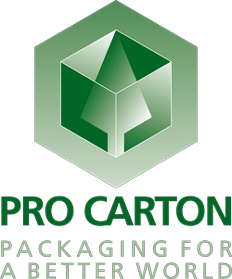Brussels, December 12 2022 – Today, the 4evergreen alliance publishes the beta version of its Fibre-Based Packaging Recyclability Evaluation Protocol, part one for standard mills. This landmark tool will help the entire value chain enhance and harmonise how it evaluates the recyclability of existing and future packaging products.
Fibre-based packaging designers, manufacturers and recyclers are constantly innovating to create new products and technologies. Their aim is to maximise circularity and help the sector play a crucial, positive role in shaping Europe’s climate-neutral future. But so far, they have lacked a common European method to assess product recyclability.
To fill the gap, 4evergreen, the first alliance covering the whole fibre-based packaging sector, joined forces to develop the Recyclability Evaluation Protocol. 75 experts from across the entire value chain collaborated on the project, analysing data and incorporating results from more than 50 actual recycling tests involving close to 100 different samples.
The beta release published today is ready to be used by the whole sector to quantitively and qualitatively evaluate individual packaging products made of cellulosic fibres and score them on their suitability for recycling in standard mills. Users are encouraged to test the evaluation protocol and send their feedback to optimise this beta release into a first completed version, and feed into future ones. 4evergreen experts have already started working intensely to expand the protocol and include the recyclability evaluation for flotation-deinking and specialised mills, based on tests currently run by the alliance. The updated versions will be launched in the course of 2023.
Hans Wortman, 4evergreen Chair and Internal Business Consultant at WEPA Group said: “The 4evergreen alliance’s strength comes from our ability to share expertise and join the dots across the whole fibre-based packaging value chain. This beta release of the Recyclability Evaluation Protocol for standard mills is a major step towards a straightforward, reliable recyclability evaluation method that the entire sector can use. The next step is the development of the Recyclability Evaluation Protocol for deinking and specialised mills. These efforts take us closer to our goal for a 90% recycling rate by 2030.”
Peter Hengesbach, project co-lead and recyclability manager at Stora Enso said: “We’ve worked together intensively across the whole fibre-based packaging sector to share our knowledge and build consensus around this new and unique recyclability evaluation protocol. We are looking forward to hearing what people think of this version so that we can finetune it and expand its use to include all types of recycling mills. Our goal is to make this a widely used and accepted tool across the entire value chain.”
The Recyclability Evaluation Protocol guides users on how to interpret the results of the Cepi recyclability laboratory test method, which provides parameters covering the efficiency of the recycling process and the quality of the recycled paper produced. These results can then be entered into the protocol’s score calculation tool. The tool will assess the data and return a score from -100 up to +100. The higher the score, the more easily recyclable the product is in a standard mill. A negative score indicates that a product is not suitable for recycling in a standard mill but can potentially be very well recycled in a flotation-deinking or specialised mill.
The 4evergreen alliance adds the Recyclability Evaluation Protocol to a growing package of tools developed for the industry, which includes ‘Guidance on the Improved Collection and Sorting of Fibre-based Packaging for Recycling’ and the ‘Circularity by Design Guideline for Fibre-Based Packaging’. Together these tools will help drive the sector towards its ambition of perfecting the circularity of fibre-based packaging – and they will eventually extend over all categories of fibre-based packaging to ensure that these valuable raw materials will be kept in the production loop.
4evergreen hopes that these documents will be used as a knowledge basis by policymakers for upcoming legislation on recyclability, collection and sorting, most notably the proposal on Packaging and Packaging Waste Regulation.



